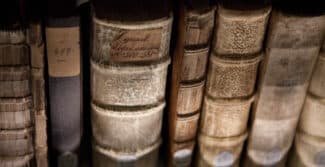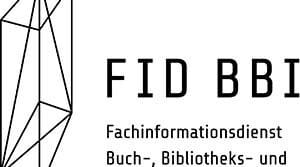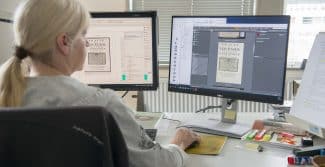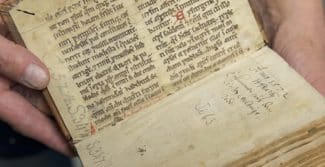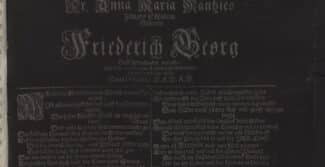4. Juli 2023
Wolfenbüttel’s copy of a Syriac Arabic psalter dating from 1610, with the shelf mark Bibel-S. 4° 227 (fig. 1 –Title page of the Syriac psalter, HAB Bibel-S. 4° 227) contains precisely this kind of evidence, namely a note written in Latin stating that the patriarch of Damascus and Mount Lebanon gave this book to one Henning von Steinberg in the monastery by the cedars ("propre Cedros") in 1612 (fig. 2).
Yet this record yields more questions than answers about the book’s history. Who was the donor – the patriarch of Damascus? And who was Henning von Steinberg? Where was the monastery ‘propre Cedros’? And, finally, how did the book get to Wolfenbüttel?
The book itself provides a clue as to where ‘propre Cedros’ might be. The title page is illustrated with an episcopal coat of arms that bears the inscription ‘SERGIVS RISIVS ARCHIEPISCOPVS DAMASCENVS’. Sergius Risius, who was better known under his Syrian name Sarkis Rizzi (1572–1638), was the Maronite bishop of the Qozhaya monastery, which was situated deep in Mount Lebanon. Wadi Qadisha, the valley of the monasteries, was also the location of the Qannubin monastery, which was the seat of the Maronite patriarch of Damascus (fig. 3)
This was most likely the ‘propre Cedros’ monastery. By 1609 at the latest, Youhanna Makhlouf (d. 1633) had been elected patriarch of Damascus after the death of his predecessor, Youssef Rizzi, in 1608 who was one of Sarkis’s brothers. This must have been the patriarch mentioned in the note.
According to contemporary biographies, the curriculum vitae in his funeral sermon and a short biography by Konrad Barthold Behrens (1660–1736), Henning von Steinberg was born on 10 July 1584, probably in Bodenburg (Bad Salzdetfurth). Along with his brother Johann Hilmar (1585–1648) he studied in Leipzig, Basel and Orléans from 1602 onwards. In 1608 he spent a short period of time in Germany, where he was appointed canon of Halberstadt. The brothers subsequently moved to Italy, and while in Venice Henning decided to travel to Constantinople and the Holy Land. It was presumably on his way to Jerusalem with a small party that he visited the Qannubin monastery in Wadi Qadisha. The return journey, which took several years, brought him back home via Cairo, Malta, Sicily and Naples. His extensive travels qualified him to fill key posts at court in the Principality of Braunschweig-Wolfenbüttel. He died on 14 February 1639 in Halberstadt.
A note in the book’s cover (dating from the 17th or 18th century) explains that the work had been brought back as a souvenir, and was a ‘Psalterium Davidis regis et Prophetae, Syrice excusum’. It turned out to be a true rarity known as the ‘Psalter of Quzhaya’, a bilingual Syriac Arabic edition of the psalter and the Prophets, which was printed in Quzhaya monastery in 1610. Only six copies are known to exist. The text in both languages was printed with Syriac type – a common practice for the liturgical books of Maronite Christians. Arabic texts written in Syriac script are called Garshuni.
The psalter is regarded as the first book to have been printed in the Levant. The printer was Pasquale Eli from Camerino, who was assisted by a deacon called Youssef ibn Amimeh from Karmsaddé. The work was published by Sarkis Rizzi.
On the final pages of the psalter, Youssef ibn Amimeh writes that Rizzi commissioned the printing and bore the (undoubtedly very high) costs himself. One particularly elaborate feature is the use of two Syriac typefaces in the Western variant Serto ; no other printed works with these two scripts are known to exist. It is thus all the more astonishing that the copies were apparently given away (as was evidently the case with the Steinberg copy).
Despite – or perhaps because of – its rarity, the psalter has long been familiar to Bible researchers. In 1811 Christian Friedrich von Schnurrer (1742–1822) mentioned a copy in the private library of his friend Jacob Bruns (1743–1814), the last librarian of the Helmstedt university library.
Thirty years later, Henry Cotton (1789–1879) makes note of a copy in Helmstedt and of the book belonging to Bruns. The psalter is listed in the old Helmstedt catalogue (fig. 4).
An old shelf mark demonstrates that the volume was already in the library’s holdings before 1770. However, the Wolfenbüttel copy does not contain a Helmstedt shelf mark, which is extremely unusual. Is this the private copy owned by Bruns? And if so, where is the Helmstedt copy?
One thing is certain: by 1858 the volume was no longer in Helmstedt. The ducal library in Wolfenbüttel had already taken over a number of books from Helmstedt in 1832/33, as evidenced by a handwritten list (HAB BA III,151). The psalter appears on this list too. So the Wolfenbüttel copy does come from Helmstedt, even though there is no sign of this in the volume itself. The putative Bruns copy is most likely the same book.
Henning von Steinberg died without issue. The presumed heirs, his brothers Johann Hilmar and Adolph (1594–1660), did erect an epitaph for him. However, it is not known where his estate went – thereby leaving us in the dark about the ownership of the volume between 1639 and around 1770, before it came to Wolfenbüttel via Helmstedt.
Literature:
Behrens, Konrad Barthold. Genealogische und zum Theil historische Vorstellung des Uhrsprungs und Fortstammung Einiger uhralter, wohlgebohrner hochadelicher Häuser … Sonderlich derer von Steinberg. Hanover and Wolfenbüttel: Gottfried Freytag, 1703.
Bohne, Conrad Johann. Iusta Steinbergiana Das ist/ Christliche Leich- und Trostpredigt. Bey dem Adelichen Begräbniß/ Der ... Frawen Annen/ Gebornen Postinnen/ Des … Jobsten von Steinberg sel. auff Bodenburg/ [et]c. Erbgesessenen/ nachgelassenen Wittwen/ [et]c. Welche Ann. 1639. am 22. Martii … selig verschieden: Wie auch Des … Herrn Henning von Steinberg/ … Welcher den 14. Februarii vorher/ … diese trübselige Welt gesegnet. Hildeßheimb [Hildesheim]: Joachim Gössel, 1639.
Cotton, Henry. A Typographical Gazetteer. 2nd edn. Oxford: Oxford University Press, 1831.
Moukarzel, Joseph. ‘Le psautier syriaque-garchouni édité à Qozhaya en 1610: Enjeux historiques et présentation du livre’. Mélanges de l'Université Saint-Joseph 63 (2010–11). #Digital# [https://www.researchgate.net/publication/330563882_Le_psautier_syriaque-garchouni_edite_a_Qozhaya_en_1610_Enjeux_historiques_et_presentation_du_livre]
Schnurrer, Christian Friedrich von. Bibliotheca arabica. Halae ad Salam [Halle (Saale)]: Typis et Sumtu J.C. Hendelii, 1811
PURL: http://diglib.hab.de/?link=171
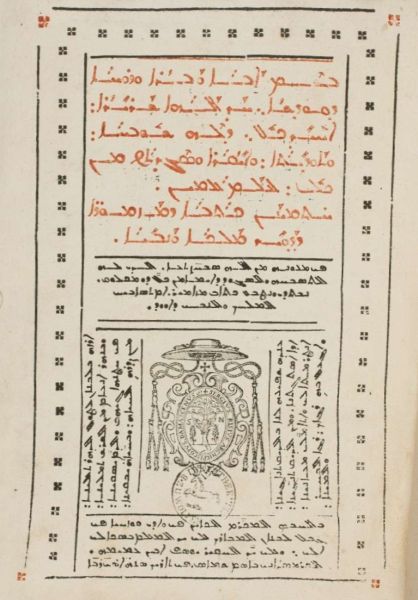

![Fig. 3 – A Maronite Patriarch, mezzotint work by Andreas Scharff/J. Andreas Scharffen [c.1700]. Contained in HAB Xb 4682](http://www.hab.de/wp-content/uploads/2023/07/habblog-boveland-souvenir-abb-3.jpg)


